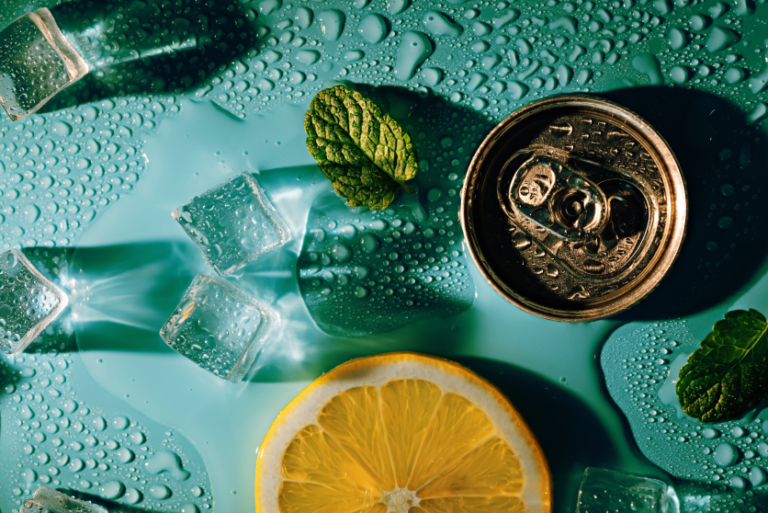04/09/2025
Three strategies for engaging with Gen Z LDA+ audiences
WGSN forecasts trends to connect to Gen Z LDA+ drinkers and identifies community, flexibility and discovery as major themes.
IWSR’s latest Bevtrac survey of consumer sentiment reported a significant rise in the Gen Z legal drinking age (LDA+) participation rate, growing from 66% in March 2023 to 73% in March 2025. This is still below the overall adult participation rate of 78%, but the gap between Gen Z and other generations is narrowing.
This finding did not, however, come as a surprise to the Food & Drink strategists at WGSN, (the global authority on consumer trend forecasting, which acquired IWSR in May 2025).
Jennifer Creevy, director of Food & Drink at WGSN, regularly forecasts expected cultural and lifestyle shifts among Gen Z LDA+ drinkers. Back in 2023, WGSN determined that Gen Z LDA+ drinkers were not shunning alcohol completely, but instead wanted to consume alcohol differently than previous generations.
WGSN has identified several ways for alcohol producers to reach Gen Z, with three key factors being community, flexibility and discovery.
Community is key
For Gen Z LDA+ drinkers, community is paramount, and the location they consume alcohol in is driven by the communities they want to share an occasion with. They are looking outside the traditional bar and restaurant situations and pioneering new occasions whether out or at home. Examples include the rise of the curated at-home bar, late-night or even daytime parties held in a local vintage store or hairdresser, or social gatherings in traditional settings based on shared interests like learning a language or nostalgic board games.
According to Creevy, “Creating new community-driven occasions is key for this generation.”
Flexibility is paramount
Gen Z LDA+ drinkers demand maximum flexibility. “This generation might choose full-strength alcohol on one occasion, a low-alcohol option the next, and switch to zero alcohol after that – or enjoy each of these options on one night out,” says Creevy. “The most important thing is to give them control.”
This demand is fuelling the rise of trends like mini cocktails, designed to provide more opportunity to sample different drinks or enjoy a single drink at lunchtime, or the trend for four—or six-packs of beer with varying strengths in one pack. The emergence of mid-strength alcohol allows drinkers to moderate their intake, or sample more categories during the same occasion.
According to the WGSN Signal Map (a proprietary social listening tool which identifies and tracks trends among a curated set of innovators across social media), conversations about flexibility and control within alcohol continue to rise, up 6% from October 2024 to May 2025.
Discovery first
For Gen Z LDA+ drinkers, discovery is a key part of their enjoyment. According to WGSN, this can manifest in many different ways, including new flavours, textures, global influences, new takes on nostalgia and unique fusions.
“This generation thrives on discovery,” says Creevy. “And in the face of the stress and challenges across the world, this often plays out with fun flavours, mash-ups and multi-sensorial takes. The key is to make it playful, not too serious, and deliver newness through evolving iterations.”
Some of the ways WGSN suggests catering to these evolving needs include: introducing flavours rising from countries with influential pop cultures like China, Korea and Mexico, “high-low” pairings such as wine designed to pair with ice cream, and humorous creations like flavour profiles taken from meals like pizza or Thai Beef Salad.
According to WGSN’s Early Signal Score (a social listening measurement designed to pick out what innovators are focused on), unserious drinks are rated “high.” This means the trend is at an early stage and there is plenty of scope for product development.
WGSN has also identified a new era of nostalgia that feeds into the playful trend. Here, nostalgic memories like childhood foods or places are harnessed for new flavours. This could manifest as cocktail flavour profiles which are based on childhood breakfast cereals or the hard-boiled sweets grandparents give you.
Conclusion
IWSR’s quantitative research and WGSN’s quantitative and qualitative forecasting are pointing to the same conclusion: Gen Z LDA+ drinkers are increasingly engaged with beverage alcohol but want to do so on their own terms. To be successful, brands need to identify creative ways to meet their evolving demands for community, flexibility and discovery.
Strategists and forecasters from both IWSR and WGSN will be working collaboratively to develop more insights on this topic and several others over the coming months – please stay tuned for more information.
To hear more about Gen Z LDA+ drinkers and other WGSN forecasts, go to wgsn.com.
The above analysis reflects IWSR data from the 2025 data release. For more in-depth data and current analysis, please get in touch.
CATEGORY: All | MARKET: All | TREND: All |
Interested?
If you’re interested in learning more about our products or solutions, feel free to contact us and a member of our team will get in touch with you.




